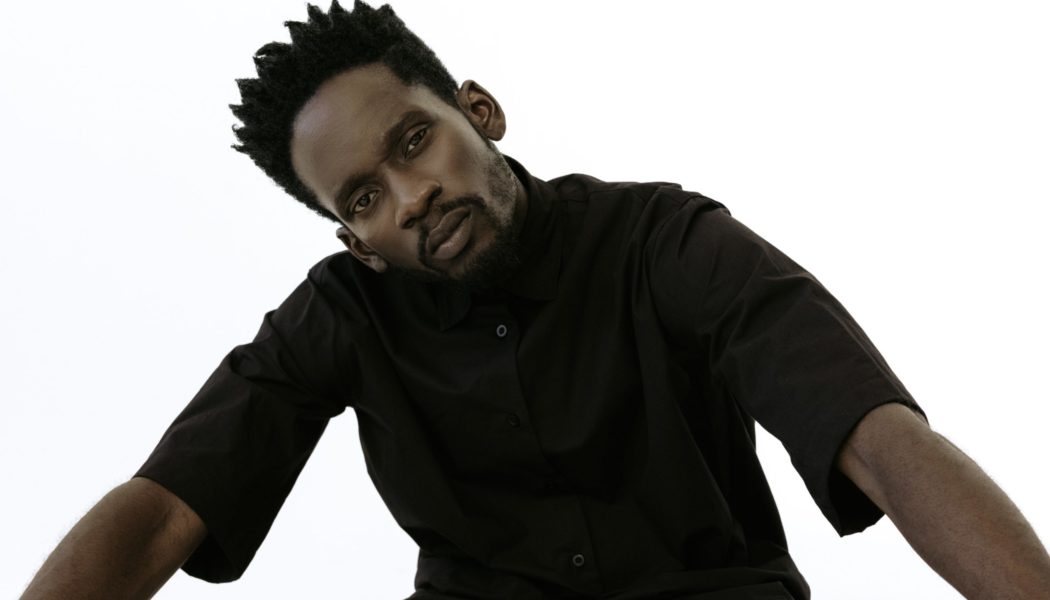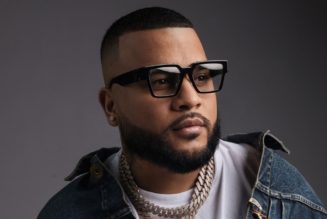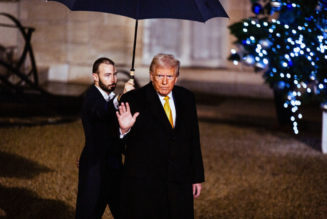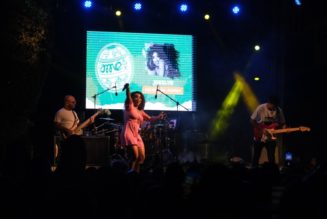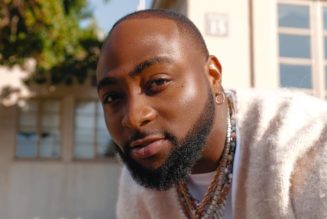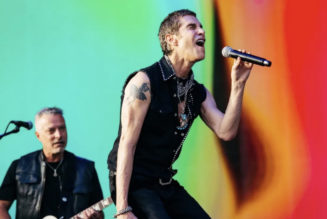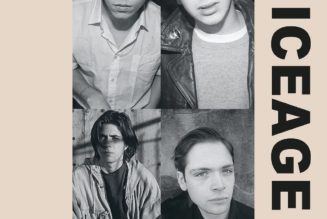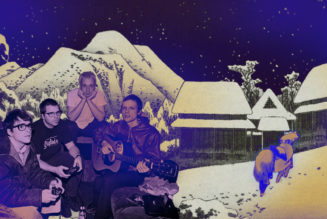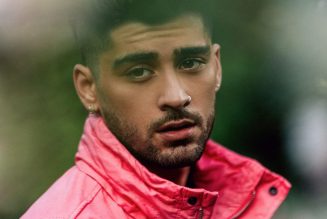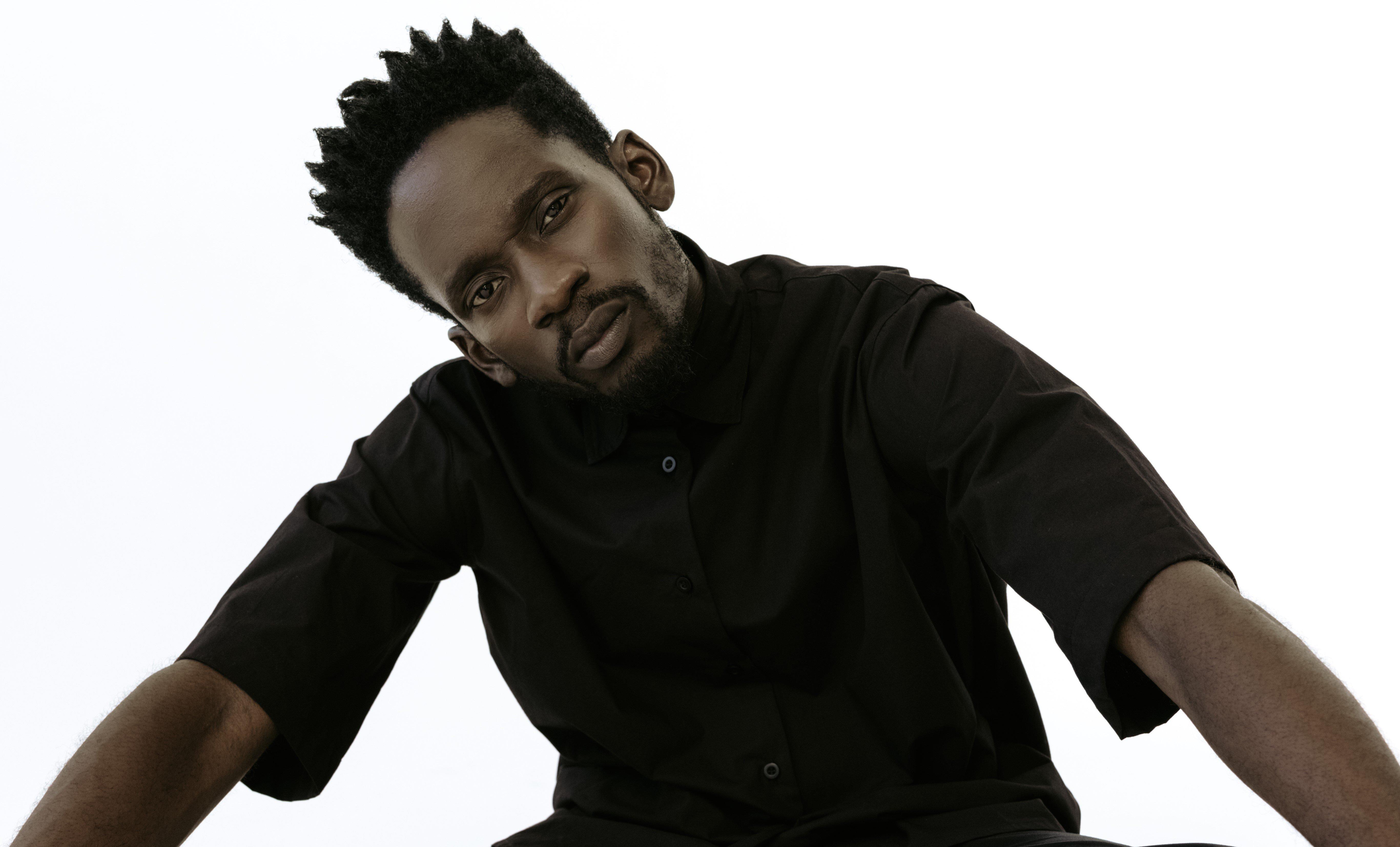
Haitian DJ/producer Michael Brun may just be 27, but he is already focused on his musical legacy: to serve his life-long vision of being able to give back to his community in a meaningful way. With his music, he wants to world to also get to know and love the vibrant sounds of his home country, and to showcase other Haitian and global artists in the process.
His new debut album, LOKAL, which dropped today, does just that. On the project, he collabed with more than a dozen featured artists for its nine upbeat, joyful tracks, weaving in traditional Haitian Rara and Konpa sounds with hip-hop, reggaetón, house and other danceable beats in a beautiful sonic tapestry. While it is his first full-length, Brun has been releasing tracks since he was in college, then with a more EDM during its early ’10s boom.
Brun also aims to recreate the sound and liveliness of the block parties he used to throw back home to new audiences; his hugely successful North American Bayo 2019 tour, which he recently wrapped, featured a selection of Haitian artists and more special guests in every city.
“Those kinds of moments with the music that I grew up and to see artists that I really love and support have this platform, I think that’s my personal favorite. That’s this whole mission that I’m working on, to get my culture and my music heard,” Brun told the Recording Academy in a recent phone interview that dove deep into the new album and his vision. He also tells the story of how he serendipitously met one of his mentors, Colombian reggaetón sta, J Balvin, and what he learned in working with him, among other topics.
You’re releasing your album LOKAL soon. What are you most looking forward to about sharing it with the world?
I think just the fact that I’ve been making music now for coming into eight years professionally, and this is my first album project that I’ve ever done. So just being able to take all these different experiences from the last eight years of touring and collaborations with all these different types of people around the world, and then also bringing my culture, Haitian culture, and sounds in a really unique way to this project, I felt like this was the moment to do it and it’s just representative of that whole journey.
Where did the idea for the project start? And how did it grow and shift as you began working on the songs and working with different collaborators?
I think part of the concept for this came from the tour that I was doing. It’s called the Bayo tour; “bayo” in Creole means give it to them, or to give. The concept for that was just to create a showcase and a presentation of Haiti and Haitian sounds and culture for the whole world to be able to learn something new, hopefully, and then maybe find a new genre of music or artist that they like a lot.
So I was doing that tour, and that incorporated Haitian sounds but then also in my sets and in the actual live performance I’d play Latin music and I’d be playing African music. And I realized that they were way more similar than I ever initially thought. And I had these moments where I was like, I want to transition from an African song to a Haitian song or Caribbean song to a Latin song, and I felt like with the album it was an opportunity to create those transition moments where it showed the links between those different cultures. It was just over the course of two years of touring, finding those pockets where I could come up with something that would help tell that story.
That’s so cool. You did the Bayo tour first in 2016 and then again this past year, correct?
Yeah, so it started out as literally a free block party in and around Haiti. I would just set up speakers or find a spot, it would be in the street sometimes, sometimes it would be in a venue, but we would just set up, and I’d invite all these different artists around Haiti to come and perform and it just a complete surprise. So we did that in 2016 and it started out with 50 people, if that. It was super small, but just, it was more about the sound and the vibe, but it grew.
When I brought it to the States, I did it in Miami first at the Little Haiti Cultural Center and then I did the first New York show in Brooklyn. And then it just went from like 50 people to like 500 people to 1,000 to now we sold over 10,000 tickets for the tour in the last year. So it’s crazy how it’s continued to evolve and just become this way bigger concept than I thought it would be.
It must be surreal and also just really powerful to share Bayo outside of Haiti to such big crowds.
It’s been such an amazing experience to see the crowds and then also just to see the artist support too. Because I think what made this tour special, the one that we did in the spring, is we had such a diverse Haitian line-up but then we also had Maxwell in New York and Major Lazer and Mr Eazi in Miami, and then Adekunle Gold in Boston and Demarco and Kevin Lyttle, and all these different artists from around the world came in for the support. That was just so cool seeing all these different genres represented and these different countries and cultures, but somehow it could connect via Haiti. That was what I always hoped for this.
I want to talk a little bit about some of the different collaborators on the album. Did you know who you wanted to work with going into it? Or did that sort of grow organically as you started working on the album?
Partially. I knew that I wanted to work with the best of the best from Haiti. I wanted to find all the artists that I thought were doing a really amazing job across the board, not only as musicians but also as representatives of the country and supporting community and building up the image and the sound of Haiti. I had actually so many songs that didn’t even make it on the album, just for the sake of time.
From those artists to the international artists that I was close with, like Diplo and Major Lazer. I’d been doing some stuff with them for years now and to finally get a track together was really, really cool. Diplo’s been so supportive with everything. They came out in Miami it was a complete surprise, him and Walshy Fire [who is in Major Lazer with Diplo and Ape Drums]. It was really cool. Yeah, so they were one of the artists, just talking to them about the song and saying, “Let’s make a song that represents the streets of Haiti that’s a hot track but we can take it into a place where it can also be international and global.” So that was one example.
And then Mr Eazi was another example. I went on tour with him, opening forJ Balvinlast fall, and we became really, really good friends and collaborating on so many different things outside of even just the two songs on the album. We have dozens of stuff together, music and projects that we’ve been doing. He’s an amazingly talented artist, so getting him on there was a no-brainer.
And then Arcade Fire too. They had invited me to New Orleans for this project that they were doing and we got to spend a few days together, playing music and just talking. Win and Régine [of Arcade Fire] are such amazing people and to have them and the Preservation Hall and RAM all together on one song, it’s such an honor really. I feel that all these international artists and the Haitian artists, they really are some of the best in their entire industry so it’s really incredible.
The track list, with all of its featured artists, is really impressive. Was it a powerful experience for you, working with all these different artists?
Yeah, I’m so grateful, honestly. Because I feel like when you make a collaborative album, you’re dealing with so many different people, you can have a vision, but if people don’t fully connect with your vision maybe it won’t work out. But in this case, it was so smooth. I think also just the fact that I worked with people who are friends and people that I really look up to, so that we’ve connected on a level before we even made the music helped. I think you hear it when you listen to the songs, even if it’s in Creole or in French or in English, whatever language it is, I think it does feel really authentic and honest.
This song is really special to me because it not only features many of the artists from the Bayo Tour, but it also samples a song from my dad’s band Skandal. I also found out that it’s the 25th anniversary of that project. There are no coincidences in life I guess. #LOKAL pic.twitter.com/y8wRPFuOWw
— Michaël Brun (@MichaelBrun) June 23, 2019
Can you speak to the different styles and sounds that you explore in the album? You mentioned how some of them are native sounds to Haiti, so it would be really cool to learn a bit more about those specifically.
I would say there’s probably two specific genres that really were the focal point for me in Haitian music. One them is Konpa music, which is slower dance music, very Caribbean sounding with guitars and keyboards and a very iconic beat. It’s mid-tempo. That dominated Haitian music for years. My dad actually had a band that made Konpa music, when I was a baby, so that’s probably where I got some of the music production genes or whatever. [laughs] And actually, “Nouvo Jenerasyon,” which is the second to last song on the album, has a sample of his band, funny enough.
That was one genre. I feel like that’s probably the most iconic Haitian genre that’s existed. Somebody like Wyclef [Jean], for example, sampled that for some of his stuff. It’s been known for a while. Then Rara music is the other kind that I really, really love. That’s honestly one of my favorite genres of music in the whole world. It’s this traditional, ceremonial music that’s a mix of the Western African vodou rhythms and Haitian vodou rhythms with the tying of original native sounds. It’s very percussive, it’s very ritualistic. It’s so hypnotic and powerful, when you hear that music it just puts you in a trance.
I used to hear it every Sunday, actually. There was a Rara band that would always be near our neighborhood that would play and I love the rhythm so much. That very drum-heavy vibe, you hear throughout most of the album. You feel that accent, it feels like the earth.
That whole combination of the two genres and then Afrobeat, and electronic music and hip-hop, and all these other genres that I was listening to and making, I wanted to infuse them and find a way to tell both of those stories.
Do you feel like the two Haitian genres were the threads throughout the album that kind of tied it together? Or, as you were integrating all these different sounds, what was the thing that kept it sounding so cohesive?
I think the main thing actually was, as a producer and why I haven’t done an album yet, this is the first time I ever felt confident in it, as I wanted to have a really clear vision with the music I was making. I wanted to make sure that when I was going to do a project like this, that it would be timeless and be something that I could be proud of in my legacy as an artist, I wanted to make sure I could put these different sounds and genres and artists, put them into this vision of a mosaic of Haiti. Actually, when you look at the artwork for the album, it is a mosaic. It’s meant to be connecting all these different parts of my culture and Haitian culture as a whole and putting that into perspective via this music.
And then something that I learned while being on tour with J Balvin and also just working with him and Mr Eazi, who are Colombian and Nigerian, was seeing how much they connected with what I was doing. The deeper I got into my own culture, the more it allowed me to connect with others. I felt like that was so important to get a clear vision of what Haiti represents to me and that led the album, that led the organization of it and the sounds. Because really genre-wise, there’s all types of vibes on this album but I still feel like it’s cohesive.
It’s that transition from local, very, very local sounds, to global that I think is what I wanted that album to be about. If there was one thing I could say about it, you listen to it and you feel like, this is Haitian, but then also wait this makes me connect with all these other cultures too.
“The deeper I got into my own culture, the more it allowed me to connect with others. I felt like that was so important to get a clear vision of what Haiti represents to me and that led the album, that led the organization of it and the sounds.”
So you collaborated with J Balvin on “Positivo,” the 2018 World Cup song, in addition to joining his Vibras tour. How did you guys originally connect? What was the biggest thing you learned from working with him?
It was really so random, it was one of the craziest experiences of my life. I was in a meeting with Apple Music for my label, because I have my own label that I founded with my manager called Kid Coconut. We were doing a label meeting with upcoming releases and we were meeting with a few different people at Apple, and they asked at the end of the meeting, “Hey, do you have anything that you wanted to play that you’re working on?” Because I was actually not focused on me, it was more like a general label meeting. And I was like, “Actually, yeah, I have this song ‘Bayo’ that I’m working on.” I had made a list of international collaborators a few weeks earlier, and I was like, “I want to work with these artists around the world.” J Balvin was the person that I had in mind for “Bayo.”
I played them a 30-second section of the song and then they’re like, “One sec. Can we get somebody else to come in here?” And so they brought the Latin editor at Apple, her name was Marisa. I spoke to her for a bit and played her the song. She was amazing, I mean everyone on the team was so nice, but she said, “Hey, you want to get J Balvin on this. I actually know José. I’ll put you in touch.” And I’ve heard that a million times and in every kind of way, like, “Yeah, I know that person.” I was like, “Okay, but thank you, I don’t expect that at all, but I appreciate you saying that.” And then legitimately one week later, she messaged me, “Hey, José loved the song and he wants to speak with you.”
And that was it. He sent me “Positivo” one week later and then three months later he hit me up again and he was like, “Hey, the World Cup’s been asking me if I had a song that we could use.” I was like, “Of course, use that. Why are you even asking?”
It just happened so naturally and he’s been such a leading mentor and also given me a really great spotlight consistently, bringing me on any way he can. Bringing me, for example, to work on his upcoming album. It’s been blessings for the last two years, nonstop blessings. I’m really grateful and also excited because I feel like all these different things I’m working on, they’re now going to be coming out. I can’t wait for people to see it.
That just sounds like such a serendipitous but also very much meant-to-happen moment of connecting you and J together.
I know. Another really funny thing, which is insane, was I was with Arcade Fire in New Orleans in February for this event that we were doing together. Diplo was there too, so I met up with him and spoke for a bit and then was like, “So where are you going next?” He’s like, “Yeah, I’m going to Colombia.” I’m like, “You’re going where?” And he’s like, “Medellín. Wait are you going to Medellín?” And we literally went to J Balvin’s camp, like the day after, where we were working on music. We played football and made music, it was something crazy. I can’t imagine anybody else in the world besides Diplo going from New Orleans to Medellín, working with Arcade Fire and then working with J Balvin. It was crazy.
You talked a little bit about your Bayo tour, which you just wrapped up. What’s your favorite part about sharing music in that format?
I think there’s a few parts. One of the personal favorite things was just the fact that all these artists that are on the tour, we had I think it was about 15, both women and men, of so many different genres. They’re some of my favorite artists. And I feel like the diversity and just the quality of the music is so special, and yet it’s not really known outside of Haiti. So being able to bring these different people on these pretty big stages. Like some of these shows are like 2,000 people and sold out. We sold out Brooklyn Steel, which was nuts to have all Haitian lineup sell out there.
Those kinds of moments with the music that I grew up and to see artists that I really love and support have this platform, I think that’s my personal favorite. That’s this whole mission that I’m working on, to get my culture and my music heard. So to see it happen from this tour so relatively quickly and to get the kind of support and feedback that we have been, it’s been worth the sleepless nights and the crazy investments in every way possible. Like, making sure that everything goes as smoothly as it could, it’s been worth it all. Because just to see further opportunity come up for some of these different artists has been amazing.
“Those kinds of moments with the music that I grew up and to see artists that I really love and support have this platform, I think that’s my personal favorite. That’s this whole mission that I’m working on, to get my culture and my music heard.”
You mentioned your dad was in a band when you were growing up; what music were you jamming to when you were younger? Was there a specific moment when you knew you wanted to make music yourself?
Funny enough, I was pre-med in college and I thought I was going to be a pediatrician my whole life. That was my whole plan, because I grew up in Haiti and I felt a responsibility for the community that I was in that I had to give as much as I possibly could because I received so much. I felt like being a doctor was the most direct way. And I was volunteering at different hospitals. I got a full scholarship at Davidson College for that, to be a doctor.
But I loved music too. And both my parents were really musical. They played piano and different instruments. I did violin also, I sang, played guitar, a bunch of different things. Eventually I was producing when I was like 14, 15. And it was a hobby, I never thought, “I’m going to do this as a career.” And then while I was in college, there was this one thing that ended up going viral on Hype Machine and it opened up this Pandora’s box of music stuff. But it was really serendipitous. I feel like I’ve had a lot of serendipity in my life. The fact that I was able to speak with the school and with my family and friends and making music was the option that everybody supported. Because school was always going to be there for me, so that was amazing.
And then the other part of your question; musically, I listened to so much different stuff. My parents were really, really into ’70s and ’80s music, so like Earth, Wind & Fire. And everything from the ’80s, my dad was a huge Tears for Fears fan, he loves, loves, loves that group. And my mom listened to everything contemporary too, so it was a mix of all these different international genres and then whatever was on in Haiti at the time, so Kompa music and Rara music, hip-hop and all of that informed my music. EDM too, because I made it for like the first five years of my career. That was during that whole amazing boom of that music, so it really gave me an opportunity.
When you tell that story it really makes sense with how your musical path has all come together now, exactly where you are today.
Yeah, I mean the thing is, even though I’m making music now versus being a doctor, I feel like that is also improving the community that I came from. And to work with those tools and with the people and provide more opportunities and just have that as the focus of what I do; it’s always been there. And I can see the results now with music, that maybe as a doctor you get to reach a few thousand people in your life, which is already incredible, right? But then with music you can reach millions. And I think that as I continue on with this, I always want to keep that really in the forefront of what I do, because it’s a responsibility and I want to create as much good as I can.
I love that. And it goes perfectly into my next question; what do you feel is your biggest duty and goal as a rising global artist in 2019?
I think as a global artist, the people that I really look up to in the industry like J Balvin or Mr. Eazi or any of these international artists that I feel like are representing their cultures really proudly; they know where they come from, they really know who they are. And that allows them to not only have the support of their entire community and wherever they grew up or their country or even the continent. Eazi represents all of Africa in my opinion, not just Nigeria. J Balvin represents all of Latin America, he doesn’t just represent Colombia. And the reason they can do that is because their identities are so strong that you just know that’s what they are and they know that too. I really want that same level of clarity when I’m working as an artist so people can connect with that.
And I see that honestly, I’ve already seen it in the last few years of working on it, and being able to work with some of these impossible-to-reach people, it’s been such a blessing. And I think that goes hand-in-hand with making great art. And then also representing your community; when you do that, I feel like doors open for you and it allows you to create bridges.
What is your biggest dream for the trajectory of your path in music over the next few years?
I really want to leave an amazing legacy for what I do. I don’t want to ever have anything that’s middle of the road. I’d rather you hate it than you love it, honestly. I feel like that’s the purpose of art, it’s supposed to make you feel something. And with my legacy, when you first listen to something that I worked on, I think you’ll have that reaction. Then when you look deeper into it and you see how carefully I’ve been thinking about this and how much I’m incorporating community into the work that I do, I hope that it inspires people too.
I feel like education allowed me to get this far in my life, especially coming from Haiti where that’s not always that accessible, and it can really completely change the course of your life. I hope that when people see how I’ve been able to get to where I am today, it’s because of a combination of all these different things. They’re tools you can share, it’s not things that only a few people have access too. I want it to be accessible to everybody. So, legacy is really important to me right now.
It’s been amazing talking to you and learning more about your story and being able to hear your music, thanks so much for sharing it with us.
I really appreciate it, because that’s what helps to get this further out to the rest of the world. Everybody that’s helped support this has made it into something way bigger than I could have imagined, and I’m really grateful.
SOFI TUKKER Announce R.I.P. Shame World Tour, Reveal New Music Is Coming
